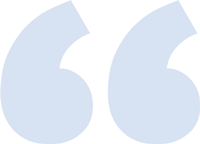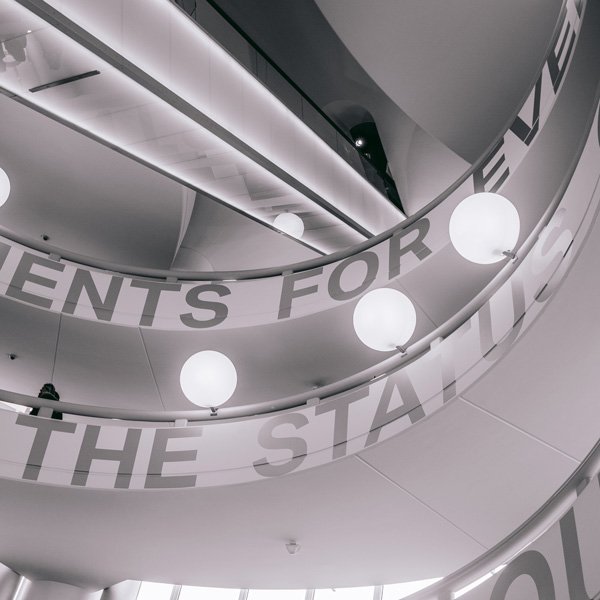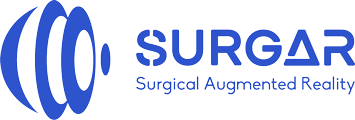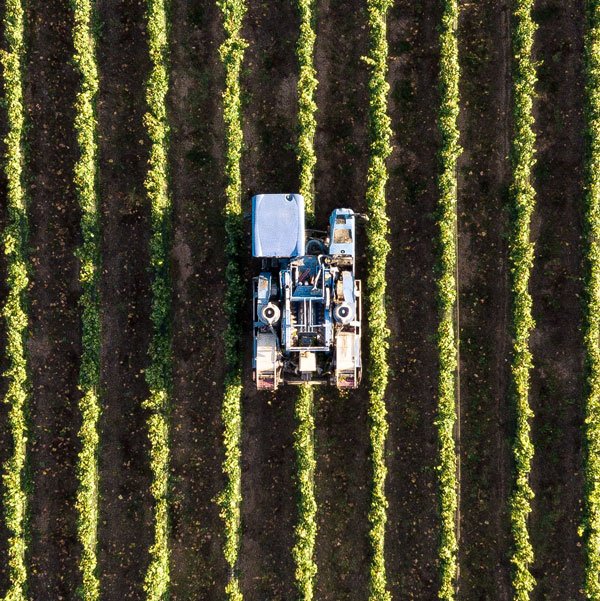Comparison with Alternatives
Supervisely vs competitors
Learn how Supervisely is different from other products on the market and find if the platform is the best fit for you.
Trusted by Fortune 500. Used by 100,000+ companies and researchers worldwide

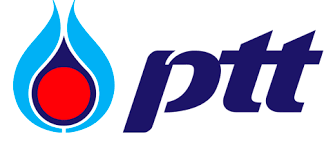



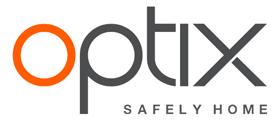
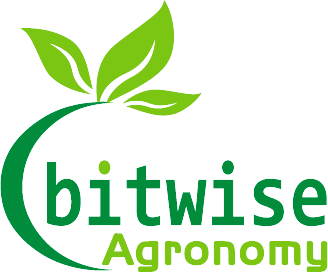



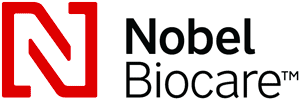
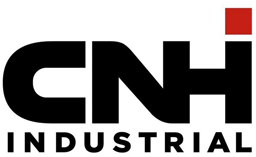

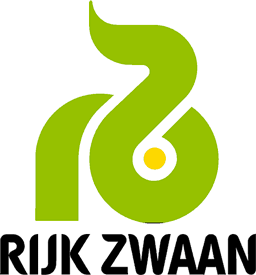
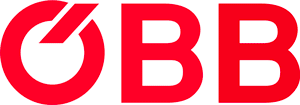




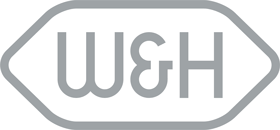

A detailed feature comparison
You probably end up here because you are searching for a labeling platform. There are so many options to choose, from developing an in-house solution to open-source projects and enterprise-grade products.
To make your job easier, we have put together a detailed overview of how Supervisely is different from other solutions.
 | Alternative solutions | |
|---|---|---|
| User friendly web-based GUI User Interface is something that our customers often like | ✅ Yes | ✴️ Rarely |
| Interface customization Customization (including Interface customization) is a strong side of Supervisely | ✅ Yes | ✴️ Rarely |
| Extensibility of features via Supervisely Apps Supervisely is a platform, Apps provide us (and our users) easy way to add features and new functionality | ✅ Yes | 🚫 No |
| App development on request App Development on a customer request is a standard practice for us. Moreover, in the majority of cases, the development is free of charge (the reason is that both sides benefit - (1) customer gets an App (2) Supervisely gets a new App in Ecosystem) | ✅ Yes | 🚫 No |
| Ecosystem of Apps: hundreds of apps that extend core functionality Apps in Ecosystem address various tasks related to Computer Vision such as Quality Assurance of Data, Performance Analysis, AI assisted labeling, Neural Network training / inference and more | ✅ Yes | 🚫 No |
| Growth of features over time Today all competitive solutions are essentially products. As a code base of any product grow, it's harder to add more features. On the other hand, Supervisely is a platform. Features are implemented as Apps. Apps are easy to create. Moreover, Apps may be created by Supervisely Team, Partners or Customers | ✅ Exponential | 🚫 Logarithmic |
| Price depends on the modules and number of concurrent users (not number of labeled objects) When (1) the price depends on the number of objects labeled and (2) annotation at scale is taken place - the annotation software may cost millions of dollars per year - it's not the case with Supervisely | ✅ Yes | ✴️ Depends on usage |
| Customer Success Team A lot of companies have such teams. However, due to the fact that Supervisely is a platform, it's way easier for us to implement missing features as Apps - to make sure that Supervisely actually solves the needs of Customers | ✅ Yes | ✴️ Rarely |
| Free evaluation period There are several ways to check if Supervisely is a good fit for a Customer. For quick tests Community Version of Supervisely may be used - just sign up and start testing. However, we highly recommend participating in the Free Evaluation of Enterprise Version - in this case we create Dedicated Slack Workspace for direct communication, provide installation instructions for on-premise (self-hosted) installation and license key. By default, an Evaluation Period is 1 month long (though it may be easily extended if more testing time is needed). Enterprise Version has more features and is free of some limitations of Community Version. Most importantly, Supervisely Dev Team helps Customers with any tasks related to Supervisely - it may be a help with installation, configuration, customization (for example, if a certain feature is missing, Supervisely Team will create an App with functionality needed), how to use questions. | ✅ Yes | ✅ Usually |
Image Labeling | ||
| Spatial labeling Rectangles, polygons, masks, points, keypoints, brush | ✅ Yes | ✅ Yes |
| Categorical labeling for images & objects (with tags) | ✅ Yes | ✅ Yes |
| Custom text description for images & objects | ✅ Yes | ✅ Yes |
| High resolution images In Supervisely there is a specialized Labeling Interface to efficiently label and navigate over high resolution images | ✅ Yes | ✴️ Rarely |
| Interactive segmentation (Smart Tool) Smart Tool is a way to label masks in semi-automatic way (10x speedup in some cases) | ✅ Yes | ✴️ Rarely |
| Smart Tool training Smart Tool is essentially a neural network that can be adopted (trained) for specific domain (object) | ✅ Yes | 🚫 No |
| Filtering of images & objects | ✅ Yes | ✴️ Rarely |
Video, LiDAR and DICOM Labeling | ||
| Working with video directly (without splitting into frames) Most commercial tools split videos into images first and then allow to label these frames (images). This approach is hard to scale. Supervisely allows to directly label raw videos. Though, splitting into frames option is also available | ✅ Yes | ✴️ Rarely |
| Spatial Labeling (rectangles, polygons, masks, points) | ✅ Yes | ✴️ Rarely |
| Categorical labeling for frames & objects (with tags) | ✅ Yes | ✴️ Rarely |
| Semi-automatic Object Tracking (State-Of-The-Art Models) One frame is labelled and then bounding boxes automatically propogated to the subsequent frames. In Supervisely we rely on State-Of-The-Art class-agnostic tracking algorithms that usually ensure high accuracy | ✅ Yes | ✴️ Rarely |
| Interactive Segmentation (Smart Tool) Allows to efficiently label objects with masks on multiple frames | ✅ Yes | 🚫 No |
| 3D spatial labeling (cuboids, points, segmentation), Categorical Labeling (tags on objects), Multiple photo-contexts & sensor fusion, Point Cloud episodes (sequence of frames) Current situation is the following. To organize annotation at scale for self-driving related industries a company may consider two option (1) free open source (not scalable) (2) solutions from scale.ai or amazon (since their prices depends on the # of labeled objects - cost may easily be in millions of USD per year). Under these conditions, Supervisely becomes promissing alternative | ✅ Yes | ✴️ Rarely |
| Working with DICOM directly (without splitting into frames) There are a few powerful open source solutions available (for example, MITK), the main problem with them is scalability - those are desktop solutions. Supervisely is probably the only web-based solution on the market that supports working directly with DICOM and provides comparable set of features | ✅ Yes | ✴️ Rarely |
Data organization & managementLet’s describe the current status on the market. Open source annotation tools don’t pay too much attention to Data Organization / Management or to collaboration at scale. Commercial products, on the other hand, have to deal with it. However, Commercial products address Data Organization / Management in a very “narrow sense” - they usually assume that “life ends” after the data is labeled and exported. This assumption is usually false, because we may want to utilize labeled data later. In other words, there should be a way to efficiently manage, query, transform raw and labeled data - for that, Data Organization and advanced Data Management tools are needed. | ||
| Basic data management includes basic operations on workspaces/projects/datasets like copying, moving, sharing, removing, backing up | ✅ Yes | ✴️ Sometimes |
| Advanced data organization Teams, Workspaces, Projects, Datasets... | ✅ Yes | ✴️ Rarely |
| Import from popular formats Supervisely, Pascal VOC, COCO, Kitti, ... | ✅ Yes | ✴️ Rarely |
| Export to popular formats Supervisely, Pascal VOC, COCO, Kitti, ... | ✅ Yes | ✴️ Rarely |
| Advanced data management rich set of operations on workspaces/projects/datasets and corresponding images / videos / point clouds (example, Data Commander) | ✅ Yes | 🚫 Almost never |
| Transformations of raw and annotated data sliding window, transformations of images (cropping, rotations,...), video to images, images to videos, transformations / merging of objects classes | ✅ Yes | 🚫 Almost never |
| Data Querying - of sorts of filtering, sampling Apps, DTL, Data Commander | ✅ Yes | 🚫 Almost never |
Collaboration at scale and Quality Assurance | ||
| User roles & permissions | ✅ Yes | ✅ Usually |
| Task management system for Labelers (Labeling Jobs) In addition to GUI, for automation and customization of Labeling at scale processes, Supervisely SDK may be used. | ✅ Yes | ✴️ Sometimes |
| Review of annotation tasks | ✅ Yes | ✴️ Sometimes |
| Feedback for annotators (issues) | ✅ Yes | ✴️ Sometimes |
| Exams to test Labelers | ✅ Yes | ✴️ Rarely |
| Consensus labeling Consensus labeling is task dependent - there are many ways to calculate consensus and to merge annotations from different Labelers. In other words, there is no “single best solution for consensus labeling”. Since Supervisely relies on Apps to implement “custom logic”, it is relatively easy to create an App that implements required “consensus logic”. Having said that, it’s important to note that “task dependency of consensus labeling” occurs in the final stage - once Labers performed the annotation. In Supervisely to set up a process when different Labelers annotate the same images is easy and straightforward (via Labeling Jobs). In addition, there are Apps that actually help with merging Annotations from different Labelers. Furthermore, if consensus is calculated by “given algorithm” then Supervisely SDK may be utilized to automate the process | ✅ Yes | ✴️ Rarely |
| Labelers statistics | ✅ Yes | ✴️ Rarely |
| Statistics related to data & labels In Supervisely, we have relatively rich statistical tools to monitor (1) Data statistics - # of labeled images, # of objects (across classes and overall), # of object instances (2) Labelers performance statistics. However, it’s important to understand that really useful statistics may be task dependent - tools to perform deep analysis of labeled data for object detection task may be very different from tools to perform analysis of data for classification task (especially if the number of categories is huge). Supervisely Apps help here a lot - there are dozens of Apps in Ecosystem already that provide various ways to visualize and summarize data for various tasks. | ✅ Yes | ✴️ Rarely |
| Interactive statistics & data exploration Statistics should be closely connected to the data. Another way to say it, is that statistical tools should be interactive. Most Apps in Supervisely Ecosystem that provide statistical analysis are interactive - while user inspect statistical properties of data, he can see the actual images that exhibit certain statistical properties. | ✅ Yes | ✴️ Rarely |
Human-in-the-loop (HIL)We use the following definition of Human-In-the-Loop (HIL) here: HIL is a process of obtaining initial predictions in automatic way and providing Labelers with the predictions so that the Labelers mostly perform corrections of annotations rather than annotating from scratch | ||
| HIL via SDK/API or GUI - Importing predictions from customer model and using the predictions as a "starting point" for the Labelers This is the simplest form of human-in-the-loop approach. Any commercial software should support it | ✅ Yes | ✅ Yes |
| HIL via Models integrated in Supervisely - initial predictions for Labelers may be obtained either by (1) using pre-trained models available in Supervisely or by (2) training model in Supervisely and running inference The fact that training and serving of Neural Networks is supported in Supervisely greatly simplifies implementations of various Human-In-the-Loop scenarios. Although, Data Labelling and Model Training functionality are tightly related, alternative solutions focus either on Labelling Tools or Model Training Tool, but not on both | ✅ Yes | 🚫 No |
| HIL via integration of Customer' model / model architecture If there is a need to integrate custom model or custom model architecture so that other users of organisation could serve or train it during Human-In-the-Loop process, Supervisely provides guides to perform such integrations | ✅ Yes | 🚫 No |
Automation & Customization | ||
| Rest API (HTTP API) Language independent way to interact programmatically with Supervisely | ✅ Yes | ✅ Usually |
| Python SDK Python SDK is a wrapper around REST API. All Apps in Supervisely Ecosystem relies on Python SDK to interact with Supervisely. Python SDK (as well as REST API) is a fundamental building block to (1) perform any automation (2) make it easy to develop Supervisely Apps | ✅ Yes | ✅ Usually |
| App Development Supervisely Apps extend the core functionality of Supervisely (In general, the Value that Supervisely Apps provide to the end-user is comparable to the Value that Applications bring to an Operating Systems). From a user perspective - an App is indistinguishable from User Interface of Supervisely - that is when it comes to User Interface Apps are very powerful. Whenever there is a need to create a Custom Labeling Interface (or extend the existing one), organize Custom Workflow, visualize task dependent Statistic or integrate new Neural Network Architecture - Apps are the way to go. In that regard, Supervisely might be considered as Operating System and Apps that is something that make the Operation System useful to the end user. Due to the importance of Apps, Supervisely provides guides and tools for Enterprise Customers to create their own private Apps. | ✅ Yes | 🚫 No |
Neural NetworksNeural Networks are just github repositories (that implement State-Of-The-Art Models) integrated in Supervisely as Apps. What it essentially means is that any SOTA model available on github is a potential Supervisely App (to transform a repo into an App a little bit of integration code is needed). This approach ensures that the latest SOTA models are available in Supervisely Ecosystem | ||
| Leveraging customers' machines with GPU for model training & serving (Supervisely Agent) Supervisely Agent is an open source tool that (among other things) enables to connect users’ machines with GPU to Supervisely. This connection allows users to initiate GPU related computation (Training and Inference of models) from Supervisely (from web browser) and leverage connected user machines to perform these computations. In other words, users can train, serve, deploy models right from the web browser. The beauty here is that a user machine with a GPU may be a machine at home, at office or machine in the cloud. | ✅ Yes | 🚫 No |
| Clasification (State-Of-The-Art model architectures) - Training & Serving Alternative solutions focus either on Labelling Tools or Model Training Tools, but not on both. Supervisely Team believes that Labelling Tools and Model Training Tools are closely connected and should be available under single platform | ✅ Yes | 🚫 No |
| Detection (State-Of-The-Art model architectures) - Training & Serving The same as above | ✅ Yes | 🚫 No |
| Semantic Segmentation (State-Of-The-Art model architectures) - Training & Serving The same as above | ✅ Yes | 🚫 No |
| Instance Segmentation (State-Of-The-Art model architectures) - Training & Serving The same as above | ✅ Yes | 🚫 No |
| Detection Models on 3D Point Clouds - inference | ✅ Yes | ✴️ Sometimes |
| Interactive Segmentation Models (Smart Tool) - Inference & Training | ✅ Yes | ✴️ Sometimes |
| Class-agnostic Object Tracking Models - Inference from Video Labeling Interface | ✅ Yes | ✴️ Sometimes |
| Model Training Dashboards Models architectures integrated in Supervisely come with Interactive Dashboards to represent Training dynamics in a visual user-friendly way | ✅ Yes | 🚫 No |
| Various User Interfaces for Model Inference Once a Model is integrated in Supervisely, it can be leveraged via various Graphic User Interfaces. Examples (1) Smart Tool may be used either in Image Labelling Interface or in Video Labelling Interface - the same model is an “engine” behind very different Labelling Interfaces (2) Neural Networks integrated via Apps - on option to run apply model is to run Inference App on the Project level, another option is to apply model inside Labelling Interface to process individual images | ✅ Yes | 🚫 No |
| Performance Analysis (example, "Object detection metrics" App) Tools to conduct an analysis of model performance in an interactive and systematic way (Interactive Confusion Matrix, Edge case analysis and more) | ✅ Yes | 🚫 No |
Synthetic Data & Vertical SolutionsCompanies that are involved in annotation business have a very interesting choice, i.e. they may choose to be (1) horizontal - their solutions have to be general and work good for most industries (2) vertical - their solutions are adopted for specific domain / industry / task (for example, Trax specializes on Retail). In Supervisely we don’t have to choose since Supervisely is a platform (horizontal solution) but certain App Collections adopt Supervisely to various industries (vertical solutions). Over time, Supervisely will support more and more verticals (industries) | ||
| Synthesis of images ("Flying Object" App) | ✅ Yes | 🚫 No |
| Synthesis of videos ("Synthetic videos for tracking" App) | ✅ Yes | 🚫 No |
| Action Recognition Labeling Collection of Apps that make it convenient to organize labeling at scale of Action Recognition on videos. This vertical solution (1) reduces complexity of labeling (since only relevant annotation instruments are shown to the user) (2) contains tools to perform Quality Assurance specifically for Action Recognition task. As for competition, open source tools do help with Action Recognition, but collaboration, scalability and quality assurance will be a problem. Commercial products rarely (none we are aware of) provide specialized solutions for this task. | ✅ Yes | 🚫 No |
| Product Labeling for Retail Collection of Apps that leverages Metric Learning to automate categorisation (association of product identifier) of products on Supermarket shelves. This Collection of Apps nicely illustrates how powerful Online Learning can be. As was mentioned before, there are competitive solutions on the market for this industry | ✅ Yes | ✅ Yes |
Infrastructure | ||
| On-Premise (self-hosted) installation | ✅ Yes | ✅ Usually |
| External Authorization - OpenID, LDAP | ✅ Yes | ✴️ Sometimes |
| Remote Storage - Azure Blob Storage, Google Cloud or any S3 compatible storage (i.e. AWS S3) | ✅ Yes | ✴️ Rarely |
| CDN Supervisely allows to use CDN services to fetch images and videos in labeling tools to speedup data fetching from remote locations | ✅ Yes | ✴️ Rarely |
SUPERVISELY FOR ENTERPRISES
On-premise edition built for your business
A fully customizable AI infrastructure, deployed on cloud or your servers with everything you love about Supervisely, plus advanced security, control, and support.
Start 30 days free trial➔- Maximum security: hosted behind firewall on your servers with advanced governance and privacy settings
- Effortless integrations: single sign-on with LDAP or OpenID, cloud storage in AWS or Azure and powerful API & SDK
- Priority support: dedicated slack chat, guided onboarding and personalized training sessions with experts
> downloading pre-requirements...
> pulling docker images...
> installing software...
> Done! Supervisely is running on port :80
supervisely update
> checking for updates...
> Your version is up to date!



Here’s why our customers trust us
8
years
Supervisely provides first-rate experience since 2017, longer than most of computer vision platforms over there.
100,000+
users
Join community of thousands computer vision enthusiasts and companies of every size that use Supervisely every day.
1,000,000,000+
labels
Our online version has over a 220 million of images and over a billion of labels created by our great community.
Trusted by Fortune 500. Used by 100,000+ companies and researchers worldwide





















Contact Us
Ready to get started?
Speak with people who are on the same page with you. An actual data scientist will:
- Show live demo
- Go through the concepts
- Learn your case
- Offer a tailored solution
Get you data labeled
Get accurate training data on scale with expert annotators, ML-assisted tools, dedicated project manager and the leading labeling platform.
Order workforce
